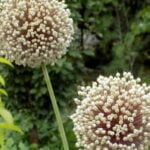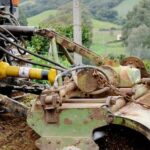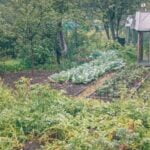Colorado vegetable gardening offers a unique set of challenges and rewards due to the state’s high altitude, arid climate, and fluctuating weather patterns. Whether you are a seasoned gardener or a beginner, learning how to grow vegetables in Colorado requires specific knowledge and techniques to maximize success. From soil preparation to pest management, this article will provide valuable information and tips for anyone looking to cultivate a successful vegetable garden in Colorado.
The climate in Colorado presents both opportunities and obstacles for vegetable gardening. The state’s diverse weather conditions, such as intense sunlight, low humidity, and sudden temperature changes, require special consideration when selecting the best vegetables to grow. Understanding these factors is essential for choosing the right crops that can thrive in Colorado’s environment.
In this comprehensive guide to Colorado vegetable gardening, we will explore the best vegetables to grow in Colorado’s climate, tips for preparing and maintaining soil, dealing with unique weather challenges, best practices for watering and irrigation, pest and disease management, as well as community resources available for support. Additionally, we will showcase inspiring success stories from local vegetable gardeners who have overcome the challenges of growing produce in Colorado.
Whether you’re a resident or new to the area, this article aims to equip you with the knowledge needed to successfully grow your own vegetables in the beautiful state of Colorado.
Best Vegetables to Grow in Colorado’s Climate
Colorado’s unique climate and elevation can pose challenges for vegetable gardening. However, there are several vegetables that thrive in Colorado’s conditions, making them ideal for gardeners in the state.
Root Vegetables
Root vegetables such as carrots, beets, and radishes are well-suited for Colorado’s climate. They have a high tolerance for cold temperatures and can withstand the state’s short growing season. These vegetables also prefer well-drained soil, which is beneficial given Colorado’s semi-arid climate.
Leafy Greens
Leafy greens like spinach, lettuce, and kale are also great choices for Colorado vegetable gardening. These crops prefer cooler temperatures and can be planted early in the spring or late summer for a fall harvest. They also do well with some shade during the hot summer months, making them adaptable to Colorado’s varying weather patterns.
Cruciferous Vegetables
Cruciferous vegetables such as broccoli, cauliflower, and Brussels sprouts are excellent options for Colorado gardeners. These crops can tolerate frost and cooler temperatures, making them suitable for the state’s climate. Additionally, they benefit from consistent watering and well-amended soil, which are important factors to consider in Colorado vegetable gardening.
By choosing the right vegetables for Colorado’s climate and following best practices for planting and maintenance, gardeners can enjoy a successful harvest despite the challenges posed by the state’s unique environmental conditions.
Tips for Preparing and Maintaining Soil in Colorado
Colorado vegetable gardening presents some unique challenges, especially when it comes to preparing and maintaining soil. The state’s semi-arid climate, high altitude, and rocky terrain can make it difficult to cultivate a thriving garden. However, with the right approach, it is possible to overcome these challenges and create fertile soil that supports healthy plant growth.
One of the first steps in preparing soil for a Colorado vegetable garden is to test its pH levels. Most vegetables prefer a slightly acidic soil with a pH range of 6.0 to 6.8. If the soil is too acidic or too alkaline, it can affect the availability of nutrients to the plants. Gardeners can use DIY test kits or send soil samples to local extension services for professional testing.
In addition to checking pH levels, it’s important to amend the soil with organic matter such as compost or well-rotted manure. This helps improve the overall structure of the soil and increase its water retention capacity. For sandy soils prevalent in parts of Colorado, adding organic matter can also help increase nutrient levels and microbial activity.
| Aspect | Relevance |
|---|---|
| pH Testing | Determining the acidity/alkalinity of the soil |
| Organic Matter | Improving soil structure and water retention |
| Nutrient Levels | Increasing essential nutrients for plant growth |
Dealing With Colorado’s Unique Weather Challenges in Vegetable Gardening
Colorado’s unique weather challenges can make vegetable gardening a bit more difficult, but with the right strategies, it is still possible to have a successful and bountiful garden. The state’s arid climate and dramatic temperature changes throughout the day can be tough on plants, especially those that are not native to the region. However, by taking certain precautions and being proactive, gardeners can overcome these challenges.
Here are some tips for dealing with Colorado’s weather challenges in vegetable gardening:
- Choose cold-hardy vegetables: Given Colorado’s unpredictable weather and potential for late spring frosts and early fall freezes, it’s important to choose vegetables that can withstand these conditions. Some cold-hardy options include kale, spinach, carrots, radishes, and beets.
- Use season extenders: To protect your plants from sudden temperature drops or unexpected frost, consider using season extenders such as row covers, cold frames, or hoop houses. These can help retain heat and protect your plants during chilly nights.
- Monitor moisture levels: Colorado’s dry climate means that plants may need more frequent watering than in other regions. Be sure to monitor soil moisture regularly and adjust your watering schedule as needed. Mulching around plants can also help retain soil moisture.
By being mindful of Colorado’s unique weather patterns and taking these steps to mitigate their effects, gardeners can still enjoy a successful harvest of fresh vegetables from their gardens. With proper planning and care, it is possible to navigate the state’s weather challenges and achieve a thriving vegetable garden.
As you navigate through your Colorado vegetable gardening journey – be encouraged. Utilize these helpful tips for dealing with Colorado’s unique weather challenges while keeping hope alive despite any daunting task you may encounter along the way.
Best Practices for Watering and Irrigation in Colorado Vegetable Gardens
Colorado’s unique climate and weather patterns present a challenge when it comes to watering and irrigation in vegetable gardening. The dry, arid conditions in many parts of the state make it essential for gardeners to have a solid plan for keeping their plants hydrated.
Choosing the Right Watering Method
One of the best practices for watering and irrigation in Colorado vegetable gardens is to choose the right watering method for the specific vegetables being grown. Drip irrigation systems are often recommended for Colorado gardens, as they deliver water directly to the roots of plants, minimizing evaporation and water waste.
Watering Schedule
Developing a consistent watering schedule is crucial for success in Colorado vegetable gardening. In some areas of the state, a daily watering routine may be necessary due to the dry climate, while in other regions, watering every few days may suffice. Understanding the water needs of different vegetables and adjusting the watering schedule accordingly is key to maintaining healthy plants.
Conserving Water
Given the limited water resources in Colorado, conserving water is important for vegetable gardeners. Utilizing mulch around plant beds can help retain moisture and reduce the frequency of watering. Additionally, investing in rain barrels to collect and store rainwater for future use can be an effective way to conserve municipal water supplies.
Taking these best practices into consideration will help ensure that your Colorado vegetable garden thrives despite the challenges of the state’s unique climate. By choosing efficient watering methods, establishing a consistent schedule, and implementing water conservation techniques, gardeners can overcome these obstacles and enjoy a bountiful harvest of fresh, home-grown produce.
Pests and Diseases to Watch Out for in Colorado Vegetable Gardens
One of the biggest challenges that Colorado vegetable gardeners face is dealing with pests and diseases that can wreak havoc on their carefully tended plants. In the unique climate of Colorado, there are a variety of pests and diseases that can affect vegetable gardens, from common insects to fungal infections. It’s important for gardeners to be proactive in learning about these potential issues and taking steps to prevent and address them.
When it comes to pests, Colorado vegetable gardeners often have to contend with destructive insects such as aphids, caterpillars, flea beetles, and spider mites. These pests can munch on leaves, weaken plants, and spread viruses, leading to decreased yields. Additionally, diseases such as powdery mildew, blossom end rot, and various blights can also take hold in the Colorado climate, causing significant damage to vegetables if left unchecked.
To combat these pests and diseases, it’s essential for Colorado vegetable gardeners to stay vigilant. This means regularly inspecting plants for any signs of infestation or disease, practicing good garden hygiene by removing any diseased or infested plant material promptly, and considering natural pest control methods such as introducing beneficial insects or using organic pesticides when necessary. Many gardeners also find success in companion planting strategies that help deter pests or boost the natural resistance of their vegetables.
In addition to proactive prevention methods, it’s also important for Colorado vegetable gardeners to educate themselves about specific pest and disease issues relevant to their region. Local gardening clubs or extension offices can be valuable resources for learning about common problems in Colorado vegetable gardening and how best to address them using sustainable and effective methods.
By staying informed and taking proactive measures, gardeners can minimize the impact of pests and diseases on their vegetable crops in this challenging growing environment.
Community Resources for Colorado Vegetable Gardeners
When it comes to Colorado vegetable gardening, there are plenty of community resources available to support and guide gardeners in their endeavors. Whether you’re a novice or experienced gardener, taking advantage of these resources can help enhance your gardening experience and increase the success of your harvest.
One valuable community resource for Colorado vegetable gardeners is local gardening clubs and organizations. These groups often host events, workshops, and meetings where members can share tips, tricks, and experiences with each other. This is a great way to learn from fellow gardeners who understand the unique challenges and opportunities of growing vegetables in Colorado’s climate.
Another important resource for Colorado vegetable gardeners is the network of community gardens across the state. These shared spaces provide individuals with access to land, tools, and expertise to grow their own vegetables. Community gardens also offer a sense of camaraderie and community, connecting like-minded individuals who share a passion for gardening.
In addition to local clubs and community gardens, many public libraries, universities, and extension offices offer free or low-cost classes on topics related to vegetable gardening in Colorado. These classes may cover everything from soil preparation to pest management, providing valuable knowledge and skills for gardeners at any level of experience.
| Community Resource | Description |
|---|---|
| Local Gardening Clubs | Opportunities for networking, sharing knowledge, and learning from other experienced gardeners. |
| Community Gardens | Shared spaces that provide access to land, tools, and expertise for growing vegetables while fostering a sense of community. |
| Educational Institutions and Extension Offices | Offering classes on various aspects of vegetable gardening in Colorado at little to no cost. |
Success Stories From Colorado Vegetable Gardeners
Colorado Vegetable Gardening has gained popularity among residents of the state as more people are embracing the idea of growing their own fresh produce. Colorado’s unique climate and environmental challenges present a set of obstacles for vegetable gardening, but many gardeners have found success in cultivating their own bountiful harvests.
Successful vegetable gardeners in Colorado have discovered a variety of tips and techniques that have helped them overcome the challenges of the local climate. Some of these success stories include:
- Utilizing raised beds or container gardening to improve drainage and soil temperature
- Implementing season extenders such as row covers and hoop houses to protect plants from late spring frosts or early fall freezes
- Choosing vegetable varieties specifically suited for Colorado’s short growing season and hot, dry summers
Additionally, some innovative Colorado vegetable gardeners have formed community collectives or co-op gardens, pooling resources and knowledge to create thriving shared plots. These collaborative efforts not only lead to successful harvests but also build a sense of community among local gardeners, allowing for the exchange of ideas and support.
Ultimately, these success stories demonstrate that with careful planning, dedication, and a willingness to adapt to Colorado’s unique conditions, it is possible not only to grow vegetables in this challenging environment but also to achieve abundant yields. By learning from the experiences of successful vegetable gardeners in Colorado, others can be inspired to embark on their own rewarding gardening journeys.
Conclusion
In conclusion, Colorado vegetable gardening offers a unique set of challenges and rewards. The state’s climate and weather conditions present obstacles that gardeners must navigate, but with the right knowledge and resources, successful vegetable cultivation is very much achievable. By selecting the best vegetables for Colorado’s climate, preparing and maintaining soil properly, dealing with weather challenges, implementing efficient watering and irrigation methods, and staying vigilant against pests and diseases, gardeners in Colorado can enjoy bountiful harvests.
As more individuals in Colorado become interested in sustainable living and locally sourced produce, the future of vegetable gardening in the state looks bright. Community resources such as local gardening clubs, workshops, and online forums provide valuable support to growers. By sharing success stories and lessons learned from their own experiences, veteran gardeners can inspire newcomers to join the vibrant community of Colorado vegetable gardeners.
Frequently Asked Questions
What Vegetables Are Good to Grow in Colorado?
Colorado’s climate presents unique challenges for vegetable gardening, but several vegetables thrive in the region. Cool-season crops like lettuce, spinach, and kale do well due to the cooler temperatures and shorter growing season. Root vegetables such as carrots and beets also perform reliably in Colorado’s soil.
What Vegetables Are Easy to Grow in Colorado?
Some of the easiest vegetables to grow in Colorado include tomatoes, peppers, and zucchini. These warm-season crops love the abundant sunshine that Colorado offers during the summer months. Additionally, herbs like basil and mint are low-maintenance options for a successful garden in this region.
Is It Hard to Garden in Colorado?
Gardening in Colorado can be challenging due to its high altitude and unpredictable weather patterns. The state experiences dramatic temperature fluctuations and occasional late spring frosts, making it difficult to plan a successful garden. However, with proper research, planning, and utilizing cold frames or row covers when necessary, gardening can still be rewarding in Colorado.

If you’re looking to get into vegetable gardening, or are just looking for some tips on how to make your current garden better, then you’ve come to the right place! My name is Ethel and I have been gardening for years. In this blog, I’m going to share with you some of my best tips on how to create a successful vegetable garden.





